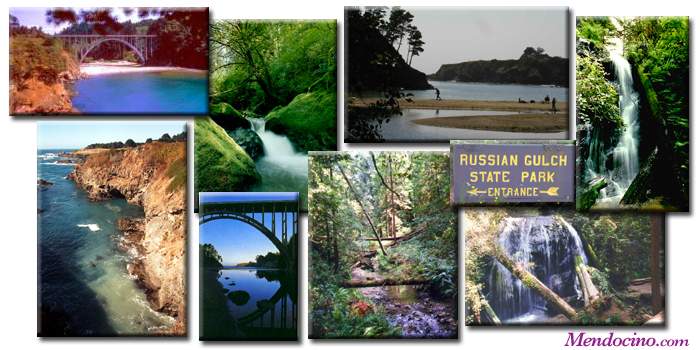Russian Gulch History

Russian Gulch State Park was acquired in 1933 through gifts of land and money by A. Johnston and the County of Mendocino to match State Park funds. Russians who established Fort Ross in 1811 were probably the first white men to explore and chart this area. Later, when cartographers were sent out by U.S. Government to chart this spot was called Russian Gulch for want of a better name. In 1852 Harry Meiggs, a San Francisco engineer and promoter, erected a sawmill at Big River. This was the start of redwood lumber industry on the Mendocino Coast. Soon other mills were popping up in all the little inlets, or "dog holes" as they were called. Since the sea was the only means of travel, these dog holes such as Russian Gulch were regular stops for the little schooners traveling from San Francisco to Humbolt Bay. They would bring freight and passengers on the way north and pick up lumber and passengers on the way back. This was a very dangerous operation in bad weather, and many of the little ships were lost. Some of the old iron rings used to hold the high lines that loaded lumber on the ships can be seen anchored in the rocks along the headlands. Redwood was considered excellent material for railroad ties, and Russian Gulch produced many of the ties used on the transcontinental railroad. Shingles were also produced here . One of the first redwood shingle mills in this part of the country was built on the site where the recreation hall stands today.
Russian Gulch state Park contains a total area of 1,162 acres with 7,630 feet of ocean frontage. With its rugged headlands thrusting out into the blue Pacific, the park is thought of by many as the north coast's rival of Point Lobos. One of the many features of the headlands is the "blow hole." Its formation was made by the incessant pounding of waves against the coastal headlands. A tunnel has been formed which comes inland about 200 feet, and at its end the earth has caved away forming a hole 100 feet across and 60 feet deep; one can look into this flower and plant-lined pit and watch the surging sea at high tide.










